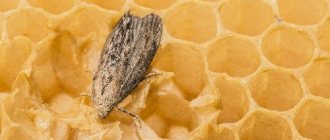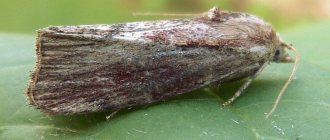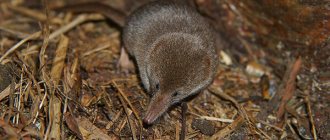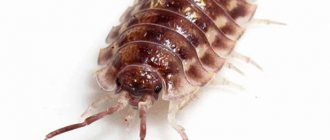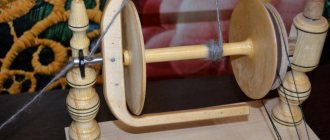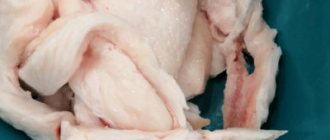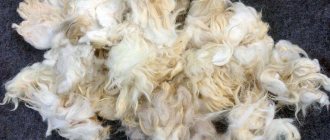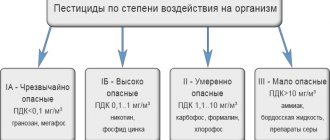What does mokrushnik look like?
The unpretentious grass from the Clove family also has other names: canary grass, midge, chickweed, bird's mint, biting midge, hernia grass. The plant is widespread in areas with temperate climates. Woodlice grows in areas with moist soil: near water sources, on the edges of forests, in courtyards of country houses, near roads, in landfills, in flower beds and beds.
The culture is a thin curly stem, covered with single-row fibers and stretching up to 10 centimeters upward. The villi are located in the internodes of the stem and allow the plant to accumulate moisture. The leaves of chickweed are ovoid in shape with pointed tips, juicy, and bright green in color. To receive more light, the lower leaves grow on tall petioles. But the top ones are located opposite each other directly on the stem.
During flowering, the plant is covered with small white flowers, which look like small stars against the background of dense greenery. Hence the botanical name – “chickweed”.
The first flowers appear in May, flowering continues until the end of August. The honey plant is pollinated by bees and insects, but when pollination does not occur, the flowers self-pollinate. The fruits are small capsules with tiny seeds. Up to 2,500 seeds ripen on one bush, with germination up to five years.
Woodlice is an annual that only lives for four weeks. But the grass multiplies quickly, so it changes 3-4 generations over the summer. The soil where chickweed colonies grow is covered with a green carpet until frost. In southern regions with above-zero temperatures, the mothbird breeds all year round.
In winter, the woodlice does not retire. Snow in autumn covers the green grass, which is covered with flowers. And after the snow cover melts, flowering continues, the boxes ripen and the seeds fall onto the cold soil. Biologists themselves do not understand why chickweed does not freeze out like other herbs.
Weed control
Woodlice produces up to 15 thousand seeds on each plant per season. The seeds germinate quickly and give life to new shoots. Any part of the stem remains viable for a long time. It takes root quickly in moist soil.
Due to such productivity, the grass quickly fills the entire area, preventing the growth of cultivated plants. Weeds are controlled using both environmentally friendly methods and the use of chemicals.
How to do without chemicals?
Most summer residents try to grow their crops without the use of chemicals. To combat chickweed, simple agricultural techniques are used:
- Regularly weed the beds by hand or with a hoe. They start in early spring, when the first shoots appear. The weed is taken out of the area so that it does not take root again.
- Remove the top layer of soil, about 3 cm, using a flat cutter. At the same time, the growth point is cut off and the reproduction of woodlice stops.
- At the end of the summer season, the site is dug up with a pitchfork. Stems, roots and other remnants of weeds are carefully selected from the soil and then destroyed.
- A method of soil deoxidation is used. To do this, during the digging process, dolomite flour, slaked lime or wood ash are added to the ground. The method is suitable for preventing the spread of weeds if used annually.
With the systematic use of these safe methods, the growth of not only woodlice, but also other harmful plants can be significantly reduced.
Control with herbicides
There is another way to get rid of such a harmful weed as woodlice in the garden. It involves the use of herbicides. They come in two types:
- All action. This herbicide destroys all vegetation in the treated area.
- Selective action. This herbicide does not kill all plants, but only certain species.
The former are mainly used on large industrial plots that have not yet been sown or after harvesting. They can be used to treat the garden in the fall to control perennial weeds.
The latter are successfully used by gardeners to eradicate weeds and protect crops. It is better to use chemicals in areas where woodlice has grown especially abundantly, being careful not to touch cultivated plants. You can use the spot method, in which only weeds are treated with a brush.
Important point! Any herbicide has a detrimental effect on chickweed, but it is better to choose selective agents with the least toxicity.
The herbicide “Lontrel 300” is popular among summer residents. It is quickly absorbed by the stems and leaves of the weed, then penetrates the root system. The effect of the drug begins after 2 hours.
Weeds die within two weeks. "Lontrel" is a moderately toxic chemical, which means it is relatively safe for humans and animals. Completely decomposes in soil after 4 months.
Along with this drug, Propolol, Axial, and Tornado are used. All herbicide preparations are used strictly according to the instructions using personal protective equipment. Weed control is carried out in dry, windless weather.
Prevention means
Timely weed control will help prevent it from spreading throughout the garden. It is recommended to prepare the planting area in the fall. The earth is dug up with ash added to the soil, and all weeds and their roots are selected.
In the spring, the beds are weeded at the first appearance of woodlice, before it grows. The soil is regularly loosened. These methods of agricultural technology are not difficult to apply in summer cottages, but they give good results.
Chemical composition of woodlice
Herbalists are in no hurry to remove this weed from their gardens. They explain their reluctance by the fact that woodlice can be used to treat many diseases, for cooking, and for skin and hair care. This herb has a neutral taste and goes well with various spices and foods. But the main value of chickweed is its medicinal properties.
Morushnik has a rich composition of useful micro- and macroelements, as well as acids and vitamins. The high value of the herb is due to the content of ascorbic acid. Starwort also contains the following elements:
- lipids;
- phytoncides;
- tannins;
- essential oils;
- flavonoids;
- vitamins B, A, K, E;
- alkaloids;
- vegetable wax;
- silicon, iodine, selenium, magnesium, cobalt, copper, iron, phosphorus;
- gamma-linoleic acid.
Morose leaves contain tripertenic saponins.
Good to know: the unique medicinal properties of meadowsweet will help improve your health
Collecting the plant
The chickweed grows for only a month, after which it dies, and a new specimen appears in its place. The herb should be harvested for medicinal purposes when it just begins to bloom and the shoots are still juicy and moist. Experts recommend doing this in May. Woodlice is pulled out of the ground along with the roots, washed thoroughly and laid out on oilcloth or other fabric in a well-ventilated place.
All weeds are considered medicinal raw materials; they begin to be harvested during the flowering season. It is best to collect the grass in early May, when the plant is still juicy and soft. Pull it out of the soil along with the roots, clean it well of soil and dirt, then spread it on oilcloth and dry. Place in a cloth bag and store in a dark place for no more than a year.
Healing potions (decoctions, infusions, compresses) are prepared from dried raw materials. The herb chickweed, the healing properties of which have been known to healers for decades, helps to get rid of pain and eliminate swelling. Our ancestors also used it to combat diarrhea, asthma, diseases of the thyroid gland and blood vessels.
Useful properties of chickweed
Microelements and organic substances contained in the ground part of woodlice are beneficial for many diseases. The plant has the following abilities:
- has a disinfecting effect;
- promotes vasodilation;
- relieves pain;
- reduces blood pressure;
- increases the activity of immune defense;
- stimulates restoration processes in tissues and cells;
- removes mucus from the respiratory system;
- activates urine secretion, providing diuretic and laxative effects;
- increases blood clotting;
- prevents the proliferation of bacteria, viruses, fungi;
- normalizes thyroid function;
- tones muscles;
- starts metabolism;
- relieves cramps;
- treats skin diseases;
- improves the functioning of the digestive system;
- increases hemoglobin in the blood.
Means of protection against biting midges
Protection from insects The most effective remedy against midges is not to go to the taiga. In cities where there are not enough reservoirs for breeding, these insects are rarely found. If a trip to the forest or taiga is unavoidable, you will have to take care of repellents. To move through the forest, you can apply insect repellent cream or aerosol to your body.
On a note!
Repellent drugs work until the person sweats properly.
In parking lots, you can use fumigator spirals or the same creams and aerosols. If you plan to spend the night near a pond, it is better to stock up on a mosquito net for your tent. As an additional measure against midges, a mixture is applied to the mesh: 2 parts tar to 1 part caustic soda. The mesh can be used only after drying in the shade.
As for mechanical personal protective equipment, it is better to get a suit that prevents “micro-mosquitoes” from penetrating the body through clothing. Particular attention should be paid to the mosquito net that protects the face and neck. The selected mesh should have as small a cell size as possible. To minimize the number of bloodsuckers that are sure to get under your clothes, the sleeve cuffs should be equipped with elastic bands. It’s better to tuck your trouser legs into your boots. At the same time, such clothing will protect you from tick attacks.
Contraindications to the use of woodlice
You should use the herb with caution or not use it at all if you have the following pathologies:
- allergy to herbs from the clove family;
- intolerance to the elements that make up the herb;
- hypotension, as woodlice can reduce blood pressure to critically low levels.
The dosage when using chickweed preparations is different, it depends on the type and concentration. For example, it is recommended to drink 2 glasses of tea per day, infusion - up to 300 ml per day, and decoction can be used up to 200 ml.
In case of overdose, complications are possible:
- nausea;
- severe hypotension;
- diarrhea or constipation;
- dizziness.
Pregnant and lactating
If there are no contraindications to taking woodlice, you can drink it during pregnancy in the 2nd and 3rd trimesters. In the early stages, medicinal herbs should not be used: the risk of adverse reactions is increased. The plant allows:
- prevent the development of anemia;
- protect yourself from seasonal diseases;
- eliminate swelling;
- support intestinal functions.
The use of herbal remedies while breastfeeding helps improve lactation. A woman can take 1 cup of weak herbal tea per day or woodlice juice mixed with honey in equal parts.
The product should be consumed 1 tablespoon 2 times a day. You can use decoctions to eliminate hemorrhoids during the postpartum period. During therapy, baths or lotions are given.
The benefits of chickweed for various diseases
The use of herbs during therapy for mild and acute diseases helps to enhance the medicinal qualities of drugs, speed up the healing process, and prevent complications. But if you deviate from the dosage regimen, wood lice can be harmful. Let's consider the effect of the herb depending on the pathologies:
- Diabetes
. Woodlice can prevent the appearance of edema, it prevents disturbances in the functioning of the heart, and the body's sensitivity to insulin improves. It is recommended for diabetics to consume the herbal infusion 3 times a day. per day, half an hour before meals, 70 ml. The course is 6–7 months, breaks are 10 days. - Gout.
Chickweed is capable of removing urate from the body, relieving pain in the joints of the knees, and preventing the further development of kidney failure. Prepare grass juice with honey every day. For 20 ml of juice use 1 tbsp. l. honey. Course – 10–14 days. To relieve pain, prepare a paste from fresh leaves and apply to problem areas. - Goiter.
To improve the condition of the thyroid gland, you need to drink up to 1 liter of woodlice tea every day. Treatment is carried out throughout the year. But every month they take a break for 10 days. You should be wary of overdose with prolonged use. There is a risk of oversaturation of the body with active elements.
Treatment of joints with mokrushnik
To relieve pain and inflammation in the joints, you should try making baths with a decoction of chickweed every day and rubbing the ointment or tincture 3 times a day into the problem area. You can apply a compress from crushed leaves. After eliminating acute pain, to prevent its recurrence, drink a glass of tea with wood lice per day for 2 weeks.
The plant is used for the following pathologies:
- arthritis;
- rheumatism;
- arthrosis;
- osteochondrosis.
Women's diseases
The medicinal qualities of mokrushnik are used in gynecology. The herb helps with the following diseases:
- Myoma
. The plant can inhibit the growth of nodes in the muscle tissue of the uterus. Tampons soaked in herbal decoction are used for treatment. They are inserted into the vagina at night. Use for five nights, then take a break for five nights. Repeat until complete recovery. - Mastopathy.
Chickweed helps relieve swelling of the mammary gland, relieves pain, and stops tissue proliferation. Tea and compresses made from fresh leaves are used for treatment. - Erosion.
The benefits of woodlice include accelerated tissue restoration and healing. Also, herbal preparations prevent infection from entering the damaged cervix. - Varicose veins
. Mokrushnik is involved in maintaining the elasticity of the venous walls, removes discomfort in the legs and cosmetic defects, and prevents blood thickening. For treatment, drink 1 glass of tea for one week and apply fresh mashed leaves to problem areas for 2 hours every day.
Treatment of the organs of vision
Mokrushnik herb is useful in the treatment of eye diseases, because it has the following qualities:
- prevents the development of infections;
- stimulates metabolic processes in the lens;
- activates tissue regeneration;
- eliminates redness and burning of the eyes.
Application options and selection of the type of herbal preparation depend on the disease:
- Glaucoma.
The juice is used as an addition to general therapy, which is mixed with alcohol (10 parts of herb juice to 1 part of alcohol). Drink the tincture 2 times a day, 50 ml, 30 minutes before meals. Course - 2 months. - Cataract
. Use chickweed juice. It should be dropped one drop into each eye twice a day. - With a damaged cornea.
To accelerate healing, a decoction of the plant is instilled into the damaged eye 4–5 times a day.
Treatment of skin problems
To eliminate skin problems, woodlice is used externally. Examples of pathologies with rules for using herbs:
- Heel spur.
For therapeutic effects, a tincture of chickweed in alcohol is used. A piece of gauze is soaked in the tincture and applied to the affected area for half an hour. The procedure is performed 2-3 times a day until the heel spur is completely eliminated. The product can be rubbed into the sore heel 5-6 times a day. - Calluses, cracks, corns.
To soften the skin and heal the damage, use fresh herbs. The leaves of the moth are placed in a sock, which is put on in the morning before leaving the house. They walk with grass all day. - Psoriasis.
Chickweed can relieve flaking, itching, and inflamed lesions. During therapy, ointments and water procedures with infusion are recommended. Treatment in the bath is carried out once a week. Applications with ointment are used 3 times a day. To prepare it, dried raw materials are ground in a coffee grinder to a powder state. Mix: 6 tsp. the resulting powder with 4 tbsp. l. medical grease. Place the mixture in a glass container and leave for three days. The ointment is applied to the affected areas three times a day.
Prevention of cancer
Woodlice can activate the resorption of tumor tumors. Therefore, it is used as a prophylaxis to prevent oncology and sarcoma. One of the prevention options is to consume fresh and dried chickweed in drinks and salads.
In the treatment of low-quality neoplasms, woodlice is used as an adjuvant. One cannot cherish the hope that the healing properties of mothweed will cope with sarcoma or cancer cells without medications. But the benefits of herbs for oncology are enormous.
Preparations based on woodlice help improve the body’s condition after chemotherapy and strengthen the immune system’s resistance to the disease.
Classic recipes
The principles for preparing preventive and therapeutic products from woodlice differ depending on the purpose of use.
- Tincture. You can use vodka or alcohol for the product. The disadvantage of the latter is that it must first be diluted with water to reduce the strength. Preparation: fill a deep container with fresh chickweed to such a level that there is 2 cm left to the neck. Pour in vodka. It should completely cover the grass. We put the product in a dark place. We insist 3 weeks. We store the product in the refrigerator.
- Infusion. We prepare it like this: heat a glass of water to 80 degrees. Pour 1 tablespoon of woodlice into a deep container and fill it with liquid. Leave for 6 hours, strain.
- Decoction. We use the same amount of water and herbs as when preparing the infusion. Heat the liquid with the raw materials in a steam bath for 30 minutes. Filter before use.
- Juice. We do this: take fresh herbs, pound the raw materials in a mortar or grind them in a blender. Place the resulting product in cheesecloth. Squeeze out the juice. It should be used immediately or stored in the refrigerator for up to three days.
- Salad. To prepare, take 2 boiled eggs, a bunch of woodlice, dandelion leaves, green onions, 50 g mozzarella cheese, 2 tablespoons of unsweetened yogurt, salt to taste. Recipe: pour boiling water over dandelion leaves and chop them together with the rest of the herbs. Cut eggs and cheese into cubes. Place the ingredients in a deep bowl and top with yogurt. Before serving, the dish must be salted.
- Oil extract. For the base we use any vegetable oil. Preparation: Finely chop fresh chickweed and pour into a jar. We take enough raw materials so that it fills the container to the neck. Fill the product with oil, close the lid, and put it in a cool, dark place for 3 weeks. Shake the jar every 3 days. After steeping, strain the oil and put it in the refrigerator.
- Tea. Brew it like this: pour 1 teaspoon of dry wood lice into a thermos. Fill with water heated to 80 degrees, leave for 15 minutes, filter.
Infusions and decoctions are also used in cosmetology. For example, they wipe the skin to eliminate acne or apply gauze soaked in a decoction to the face to get rid of facial wrinkles.
Dosage forms produced by pharmacists
You can buy dry woodlice herb at the pharmacy to prepare medicinal drinks, decoctions and tinctures at home. The dried raw materials are placed in cardboard packages weighing 30, 50, 100 g. Other types of medicines with woodlice are also produced:
- "Shchitovit."
The drug contains, in addition to woodlice, brown algae, bloodroot, and tyrosine. Used in the treatment of thyroid pathologies as an adjuvant. - Tincture.
Alcoholic extract of chickweed is produced in dark bottles from 30 to 100 ml. Application both external and internal. - Chickweed in tablets.
The product is produced in jars with gelatin capsules that contain crushed grass. The drug is classified as a food additive. Recommended use as a prophylaxis to increase immunity during cold epidemics. - Woodlice juice.
It is packaged in containers of 50-200 ml. The juice is used for eye pathologies, as well as for compresses. - "Endocrinol"
. The drug belongs to the dietary supplements. It contains vitamin E, woodlice, and cinquefoil. Used for the treatment and prevention of endocrine diseases.
Chickweed is a weed that many summer residents and gardeners are trying with all their might to remove from the site. The main reason is the rapid spread of grass throughout the area. But herbalists and doctors classify the plant as medicinal. Infusions, teas, ointments, decoctions and oil with morushnik help protect against various diseases, eliminate the likelihood of complications in acute diseases, and reduce the risk of symptoms in chronic pathologies.
Harm from using chickweed can only occur if the dosage is not followed and the dosage is exceeded.
Please rate our material:
Use in cooking
Russian peasants have been using woodlice as a food product for a long time. As soon as spring began, there was a need for products that could compensate for the lack of vitamins. Mokrichnik was an ideal option in this regard. They cooked green cabbage soup with it and added it to other dishes. This helped fight the traditional spring vitamin deficiency in the village.
Today there is no such urgent need to replenish the lack of nutrients in the body with the help of ordinary herbs. However, modern people can also eat it. There are several recipes:
- Vitamin cocktail. 250 g of fresh herbs and 50 g of chopped horseradish need to be infused for 4 hours in two liters of chilled boiled water. After this, the infusion is filtered, honey is added to it.
- Tonic drink. Take two apples, the same number of tangerines, 2 glasses of water and a handful of chickweed. All this is scrolled in a blender.
- Vitamin salad. Wood lice leaves, green onions and chopped boiled eggs are mixed and poured with sour cream. It is better to salt the salad.
- Salad No. 2. You need to chop and mix carrots, garlic and fresh chickweed. All this is filled with vegetable oil or sour cream, you need to add a little salt.
- Salad No. 3. Take onion, dill, parsley, red onion, 2 boiled eggs, 100 g each of chickweed and beet tops. All this should be chopped, salted and poured with sour cream.
Woodlice, despite its appearance, is a storehouse of vitamins and other useful substances. It will be good both when added to food and in your home medicine cabinet.
What do woodlice eat in an apartment, how to get rid of it. Where do woodlice mostly live?
The love of silverfish (or woodlice) for dampness, as well as the bait - the smell from the trash can, or from food that has not been cleared from the table for a long time or from dirty dishes in the sink - is the main reason for their settlements in the apartments of such creatures. So if you were away from home for a long time, and you forgot to throw out the trash or wash the dirty dishes before leaving, you may be greeted by woodlice upon arrival. It must be said that silverfish differ from woodlice in size and body structure, but their lifestyle is typical and the same. To know where and in what places to treat a room when fighting bugs, you need to understand where they most like to settle. Such bugs can live in an apartment in the following places:
- under the bathtub,
- behind the toilet;
- behind sewer or water pipes;
- in ventilation ducts;
- under the windowsill;
- inside sewer pipes;
- near the trash can;
- under baseboards;
- under rugs, rugs, carpeting, where it is damp, dark and no one has cleaned it for a long time.
In a word, wherever it is musty, damp, dark and dirty - there are ideal conditions for insect-like parasites to live. Dampness can form in the house due to a poorly ventilated atmosphere. Perhaps the ventilation shafts should be cleaned, for which a special employee from the housing office is usually invited. The cause may also be the formation and accumulation of condensation. For example, if window sills and double-glazed windows are poorly insulated, then a damp environment can gradually form there, which is ideal for woodlice to live in. These individuals do not particularly require warmth, so they can withstand cold air.
What do woodlice eat in the soil? The role of woodlice in nature and human activity
By nature, woodlice are not pests. The usual habitat is places saturated with dampness and moisture. On the street, woodlice “work” as a cleaner of decaying plants, simply eating them. Woodlice process non-living plants, depositing feces instead of them, which are subject to rapid decomposition. If the plant is infected by a fungus, then the insect can eat it up, preventing its reproduction and saving the plant from disease. And by depositing feces after this, woodlice help stimulate putrefactive decomposition in the soil and the appearance of fertile soil.
That is, wood lice help speed up the process of processing organic matter and returning mineral nutrients to the soil.
If woodlice have entered your home, it means that their natural habitat has formed somewhere in your home. Since insects prefer darkness and move quickly, you can see them by turning on the light suddenly. In the dark, they look for sources of food, or, on the contrary, they have already collected the moisture their body needs and run to secluded places. Their journey at night can be quite long: for example, from the basement they climb to any place in the apartment, even to 10-20 floors.
